Dewalt 20V DCC020IB vs Milwaukee M12 vs Ryobi 18V ONE+ Cordless Inflator Shootout
This month Dewalt released their new DCC020IB, and we want to know how it stacks up against some of the competition already on the market, namely the Milwaukee M12 Compact Inflator, as well as the Ryobi 18V inflator. We are going to take a look at the following characteristics:
- Features
- Inflation speed
- Overall value.
FEATURES
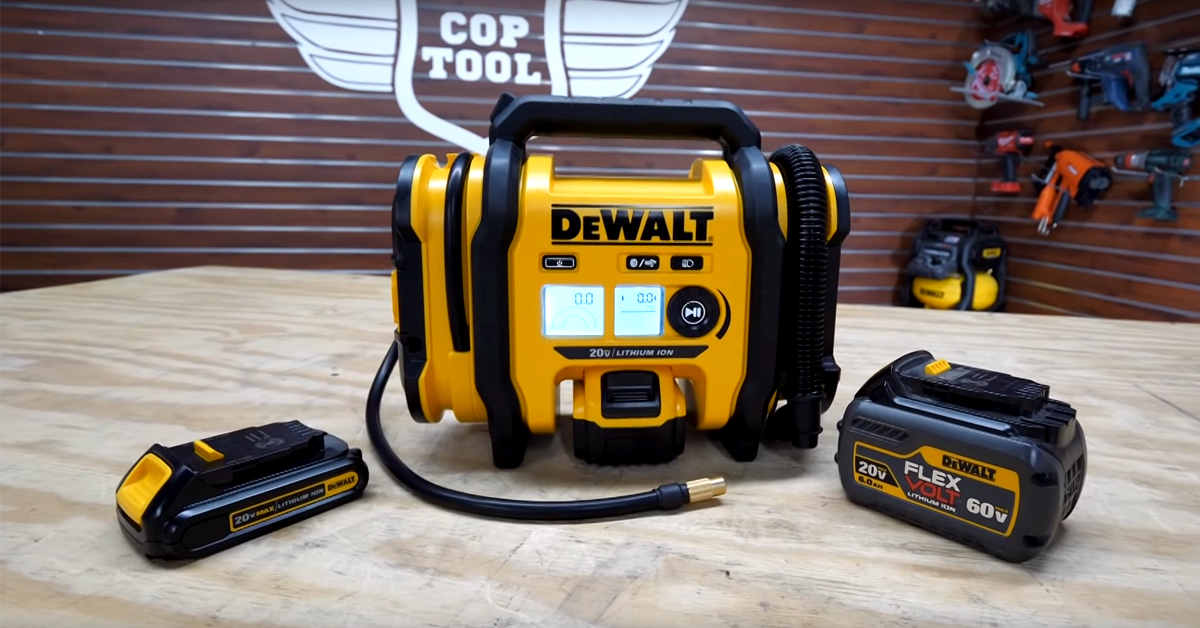
Dewalt is the newest to market of the 3. This 20V MAX* Corded and Cordless Air Inflator can run on three different power sources: a 20V MAX battery, a 12V DC car adaptor, or 110V AC wall plug, which is sold separately. Comes included with all the typical onboard accessories you’d expect such as a high-pressure rubber hose and threaded metal chuck. It has a dual LCD digital gauge, a wheel for dialing in the target PSI up to 160 in increments of 1/10ths, and auto-shutoff.
It also features a high-volume hose allowing fast inflation OR deflation of air mattresses and other inflatables. And finally, it has an onboard LED light for dark areas and solid rubber feet on the bottom. Overall, it feels solid right out of the box. It’s a hefty 5.5 pounds without the battery attached. You can preorder the bare tool for around $99.
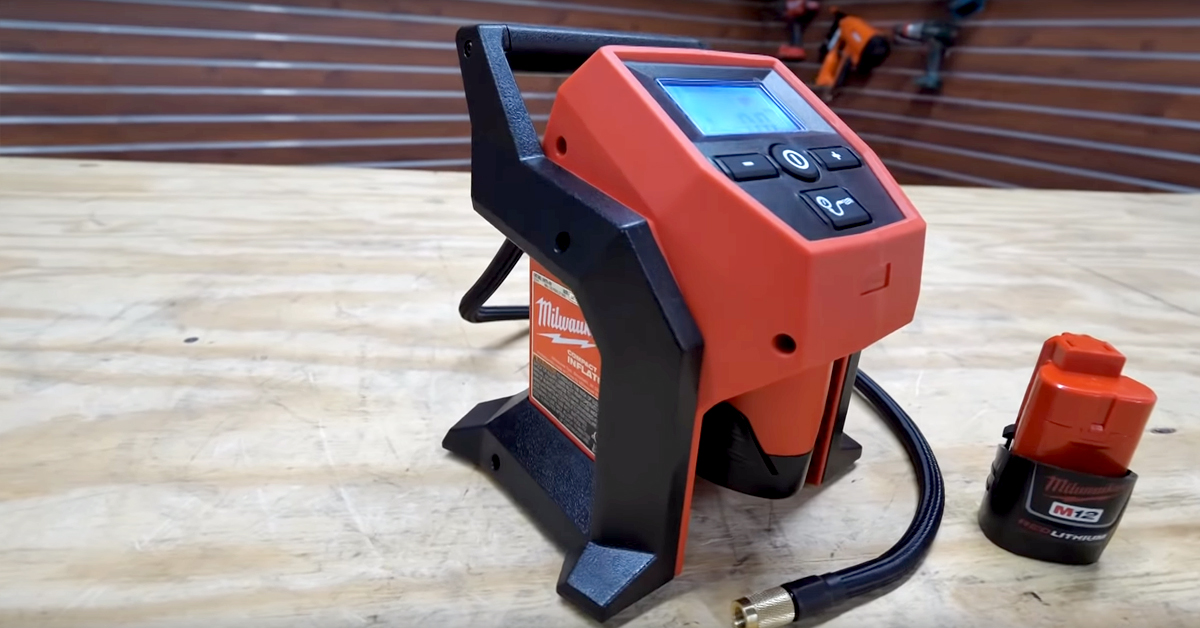
Next, the Milwaukee M12 Cordless Compact Inflator is a little different from the Dewalt in that it’s primarily focused on car, light truck, and compact equipment tires, and only runs on the M12 battery platform. There is no high volume feature for this model. As such, it’s only rated to deliver up to 120PSI in increments of .5psi, and it too has the auto shut-off feature for inflating to a target PSI. It’s got a large back-lit LCD display, rubber anti-vibration feet, and 26 inch hose with an all brass chuck. The Milwaukee also feels like it is built well, even with it being smaller than the others, it’s still 3.8 pounds. As a bare tool, you can pick up this model for around $69.
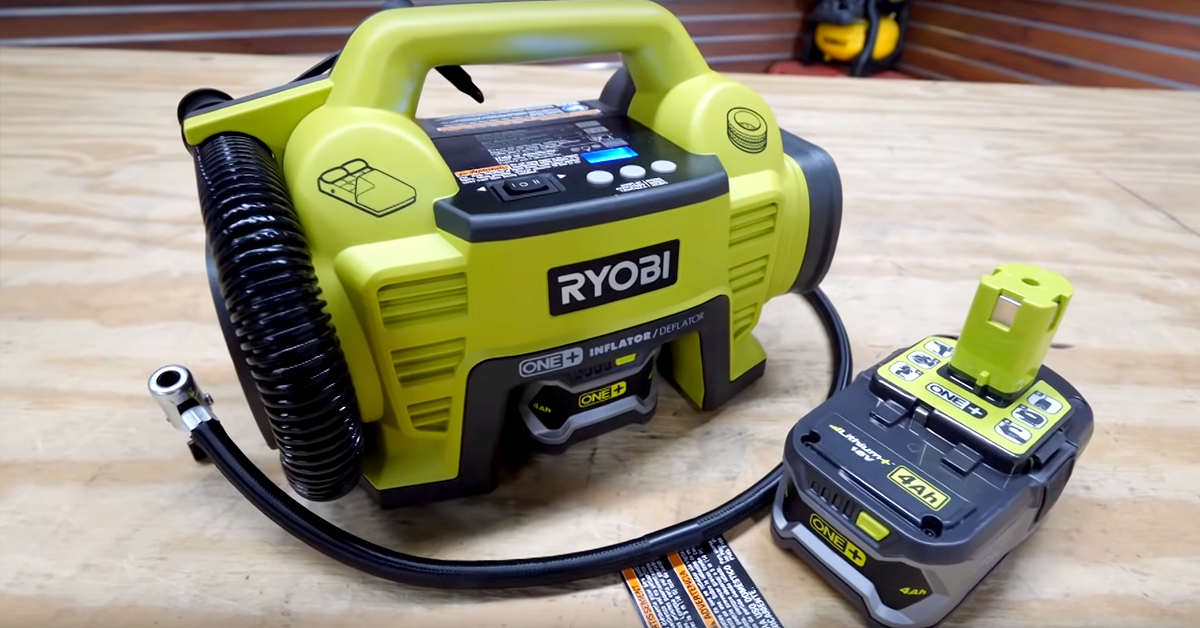
Finally, we have the Ryobi ONE+ Dual Function Inflator/Deflator, which has been on the market for almost two years now. It’s got a similar overall design to the Dewalt, and is capable of being used for both high-volume and high-pressure inflation. It has the smallest LCD display of the three, and features automatic shut-off at a target of up to 150 PSI in half psi increments. This model is the lightest of the three at only 2.8 pounds- it simply doesn’t feel as solid as the Dewalt or the Milwaukee. At around only $39 for the bare tool, it’s the lowest price point by far.
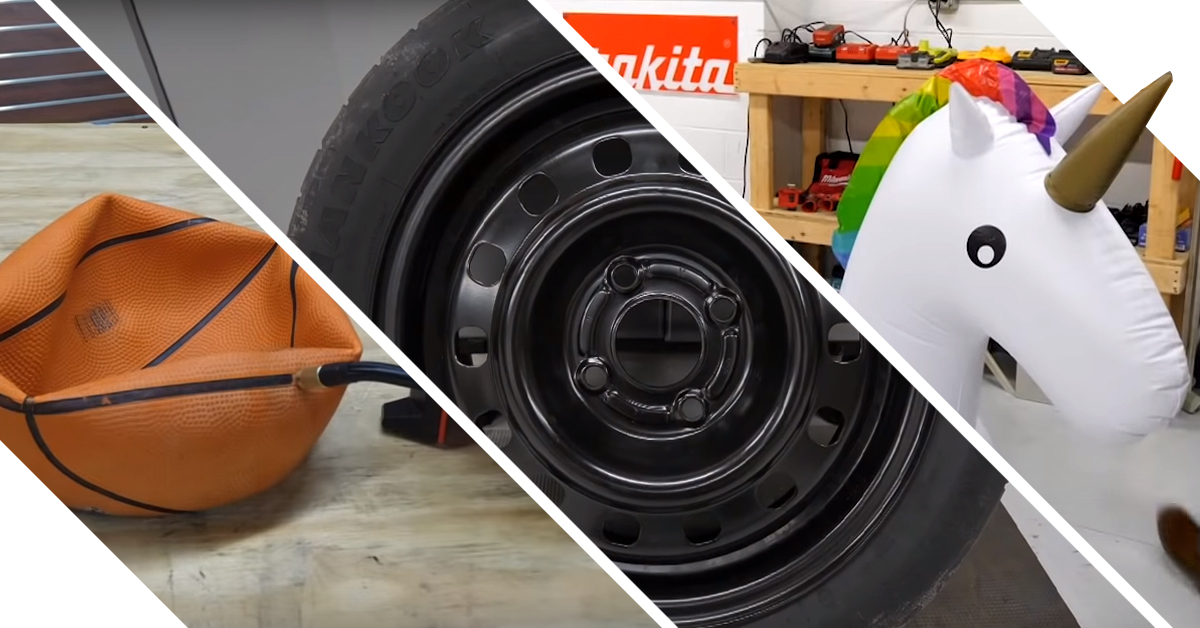
INFLATION SPEED
We’ve tested their performance by inflating 3 items in increasing order of size: a completely flat basketball, a Hankook spare tire, and after careful consideration, a Unicorn pool raft.
The basketball.
We fired up each model to inflate a completely flat basketball. How flat you ask? We put an inflation needle in it and applied 160 pounds of even pressure (Scott sitting on it) until no more air could be released. Then we set our target PSI to 10 and timed the results.
The Dewalt 20V filled the basketball to 10 PSI in a smooth 42 seconds, no problems.
Milwaukee filled the basketball the fastest in only 24 total seconds – BUT it took an extra restart attempt to get there. The internal PSI gauge thought it was full when that clearly was not the case. We thought that might be a fluke, so we deflated the ball and tried again, with the same result. Both times it still felt a little flat in the end. In short, it seemed to struggle with the lower PSI setting. Note, 10 PSI was the lowest possible PSI setting on this model.
The Ryobi 18V performed the worst. This is the only model without a threaded chuck, and the construction quality just isn’t there. I was worried about breaking the plastic when attaching the needle. It also struggled with the lower PSI setting and took multiple restart attempts to get up to 10 PSI in 53 seconds. We are talking 8 total attempts, and the ball clearly didn’t feel “full”. Not a great start for the Ryobi.
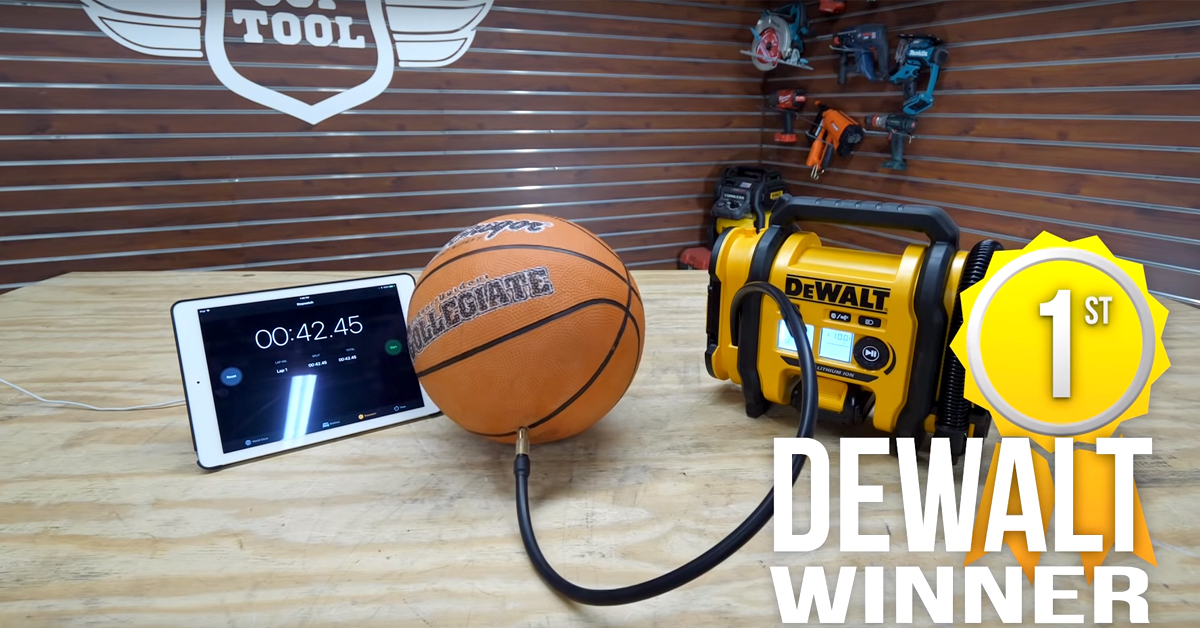
In this round, the Dewalt performed the best in that it reached the target PSI most accurately and the quickest, in only one attempt.
The spare tire
We drained the spare tire to around 3 to 4 PSI each attempt, before setting a target inflation of 45 PSI on all three models.
The Dewalt 20V filled the tire to 45 PSI in 2:38. Solid. This is when we realized how handy the dial is for setting the target PSI. So much better than having to hit the “plus” button repeatedly to get up to 45.
The Milwaukee was the fastest to 45 PSI at 2 minutes and 25 seconds, edging out the Dewalt by 13 seconds. Impressive. You can tell this is what this model is made for.
The Ryobi filled the tire in 4 minutes and 7 seconds, by far the slowest time.
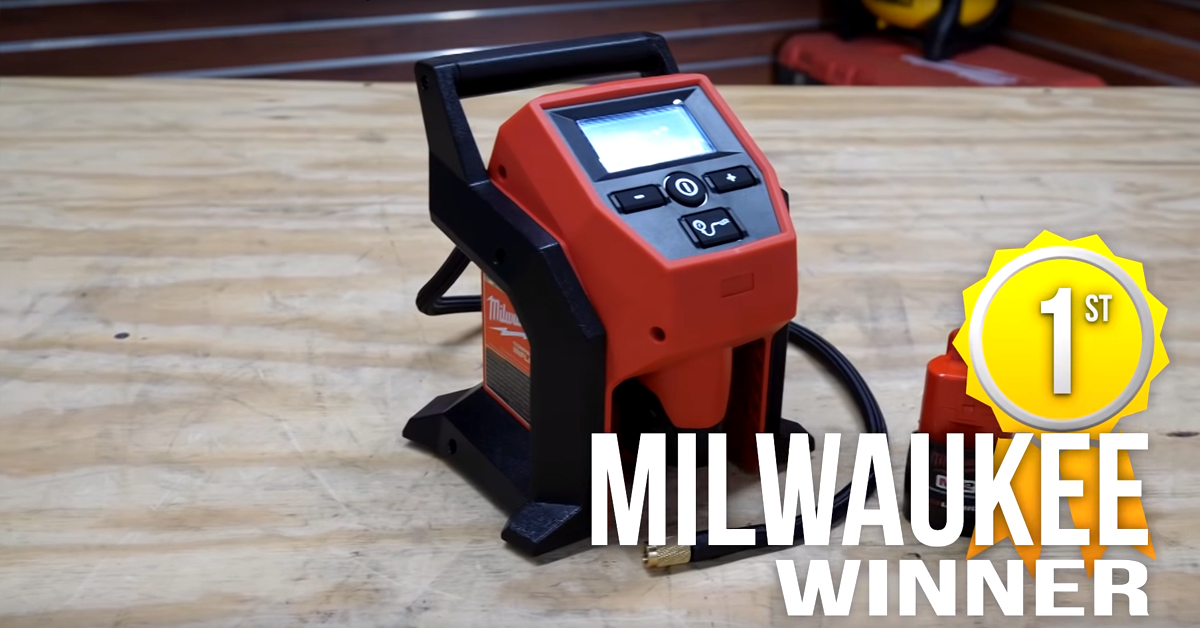
So in the spare tire test, the Milwaukee performed best with Dewalt in a close second; the Ryobi a distant third.
The unicorn raft.
We excluded the M12 from this test as it doesn’t have a high-volume feature, AND the raft’s “wide-mouth” inflation port was too big for any of the included attachments. So really this is just a face-off between the Dewalt and the Ryobi models.
It’s important to note that the raft requires inflation of the head and the body separately. We are adding the two together to get a total time. We could tell right away that the first inflation of this raft would take the longest because it has zero air in it – it’s never been inflated and is pressed and shipped flat into a box that it will never fit into again. So we went ahead and filled it once for good measure to ensure the same starting point for each contestant.
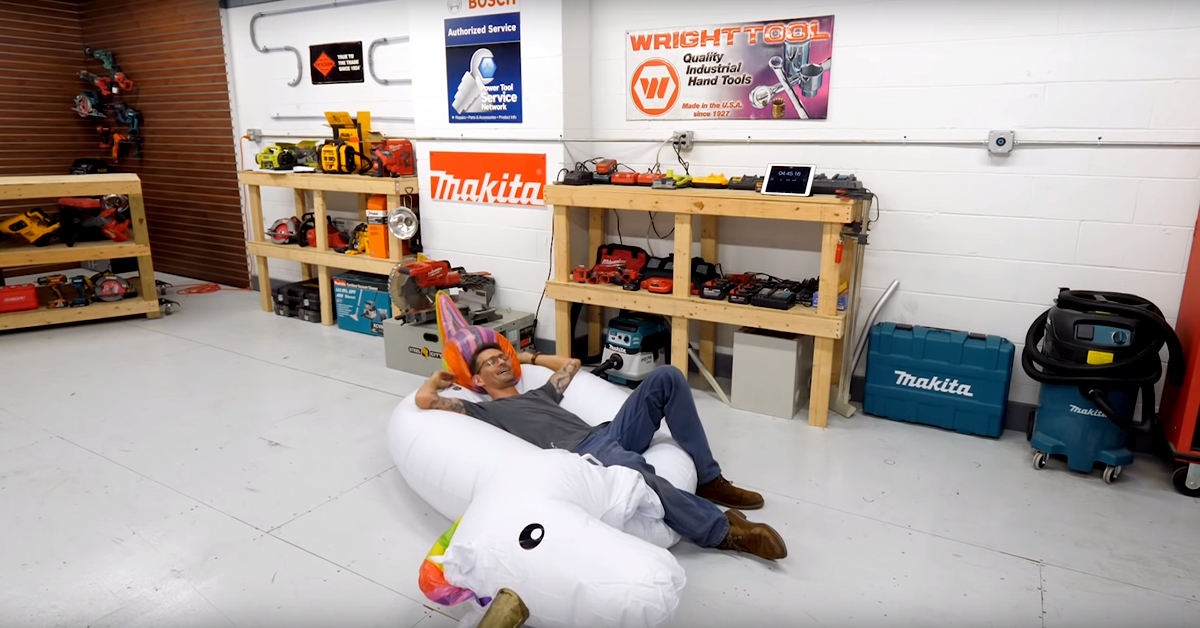
To deflate the unicorn, Scott laid on it (naturally), then rolled the thing flat into a reasonable size that you’d store away in your garage.
The Ryobi performed very well. It filled the body and head of the raft in 4 minutes and 45 seconds. But we noticed two major issues: one, the thin foam feet on the bottom of it do nothing to stop it from “walking away” and it needs to be wrangled to stay close to the raft. Two, the tube attachment for high volume feels like it’s made from a cheap plastic water bottle. No way does this thing last very long, it’s feels like you might break it when pushing it back into its storage slot on the side. At least it it stayed locked on tight during the test, which was an issue for the Dewalt…
The Dewalt took much longer than the Ryobi, a total of almost 7 minutes to inflate the raft. Not that great. Also, the Dewalt’s high volume tube just doesn’t want to stay attached to the inflator. If you move it in the slightest, it comes unscrewed and you have to pause to reattach. This was common throughout the testing. But compared to the Ryobi attachment, at least the Dewalt tube is made from a thicker plastic.
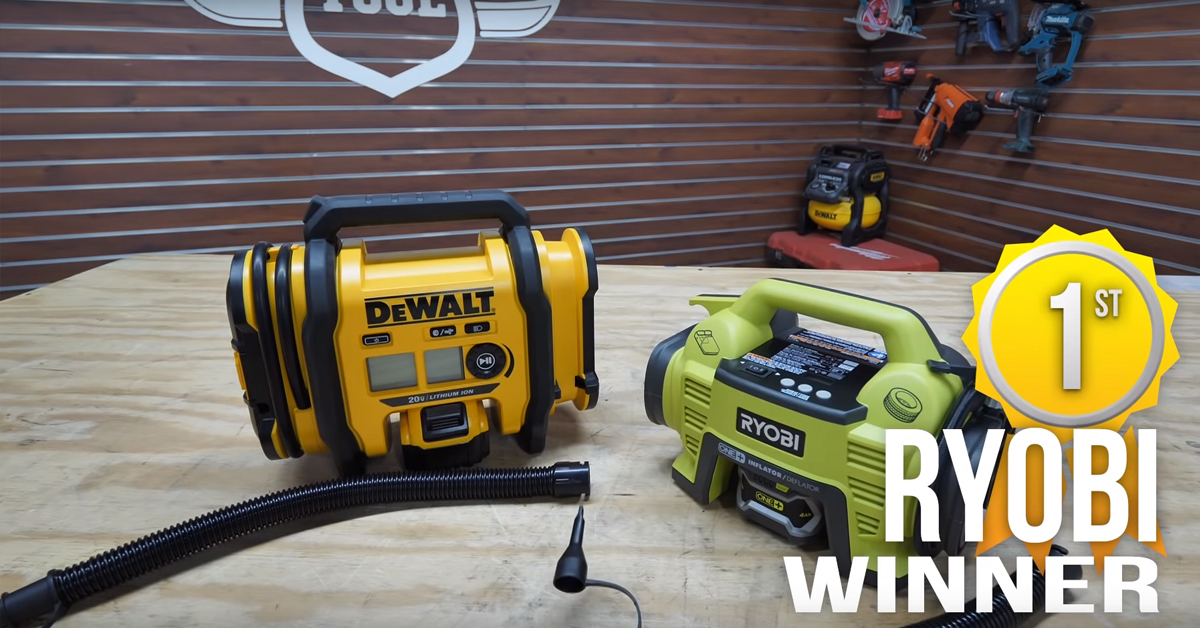
So finally the Ryobi performs well in a tests! But unfortunately the high-volume attachment on the Ryobi feels cheap and we preferred the Dewalt’s accessories.
OVERALL VALUE
Overall, the quality of each inflator really does align with their price points. Frankly, you get what you pay for.
Milwaukee performed well but it simply lacks the overall features of its competitors- it’s really designed for smaller tires and that’s about it. But it does this job very, very well. If you’re just focusing on fast tire inflation, this is the model for you.
Ryobi, well, it showed some power on the large volume raft, but that’s about it. It’s the cheapest of the three, in both quality and price point. It just doesn’t feel like this model is built to last so we can’t recommend it.
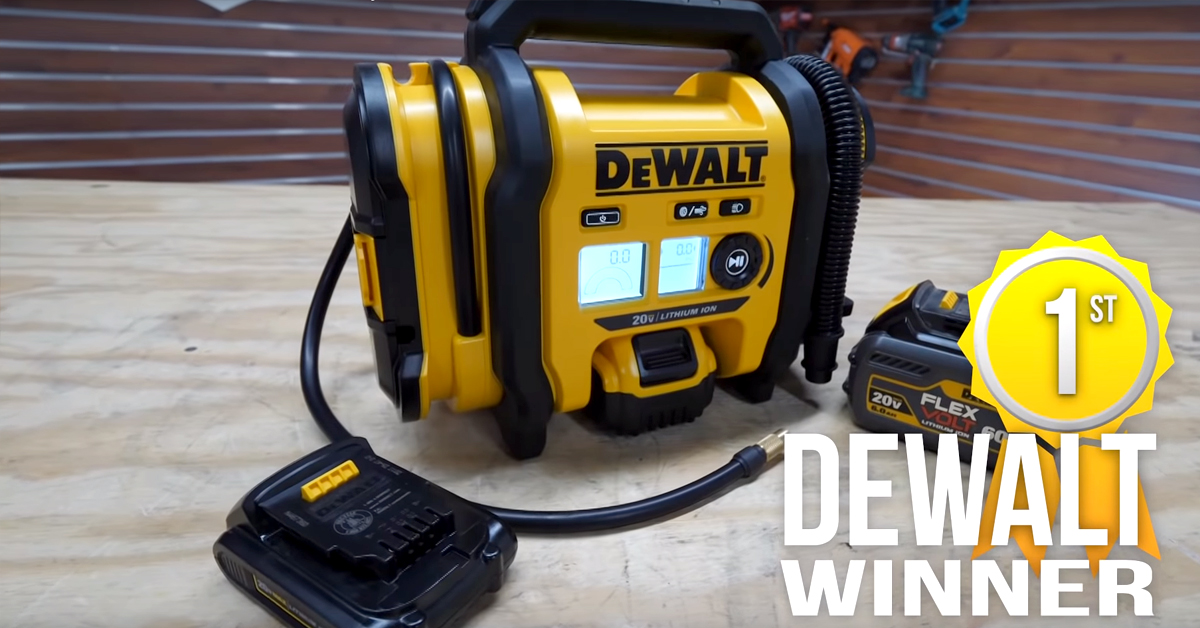
The Dewalt wins this shootout, but it’s also the most expensive. While it wasn’t the fastest in any test, it performed well and has the best features overall. We really loved the dial for targeting a higher PSI, the dual LCD display, the solid construction and the multiple options for power.
Do you agree with our choice? Was there anything we’ve missed? If so, let us know in the comments!

hello!,I love your writing very so much! share we communicate extra about your post on AOL? I require a specialist in this space to unravel my problem. May be that’s you! Looking forward to look you.
I don’t even know how I ended up right here, but I believed this put up used to be good. I do not realize who you’re however definitely you are going to a famous blogger for those who are not already 😉 Cheers!
Hello, i think that i saw you visited my weblog so i came to “return the favor”.I’m attempting to find things to improve my site!I suppose its ok to use some of your ideas!!
I have recently started a website, the info you provide on this web site has helped me tremendously. Thanks for all of your time & work.
Some truly good info , Sword lily I observed this. “Treat your friends as you do your pictures, and place them in their best light.” by Jennie Jerome Churchill.